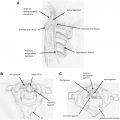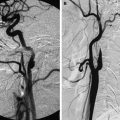Brucellosis is a multisystem infection with a broad spectrum of clinical presentations. Its nervous system involvement is known as neurobrucellosis. Neurobrucellosis (NB) has neither a typical clinical picture nor specific cerebrospinal fluid (CSF) findings. Its diagnosis is based on the existence of a neurologic picture not explained by any other neurologic disease, evidenced by systemic brucellar infection and the presence of inflammatory alteration in CSF. Imaging findings of NB is divided into four categories: (1) normal, (2) inflammation (recognized by granulomas, abnormal enhancement of the meninges, perivascular space, or lumbar nerve roots), (3) white matter changes, and (4) vascular changes.
Brucellosis is a multisystem infection that can involve any organ system and may present with a broad spectrum of clinical presentations. Nervous system involvement of brucellosis is known as neurobrucellosis (NB). The nervous system may be one of several systems involved in chronic diffuse brucellosis or, rarely, neurologic findings may be the only signs of brucellosis.
NB has neither a typical clinical picture nor specific CSF findings. In endemic areas, NB must be considered in the differential diagnosis of patients presented with neurologic symptoms and concomitant fever.
Physiopathology of Neurobrucellosis
The exact mechanism by which the organism reaches nervous system is uncertain but, after gaining entry into the body, it invades the reticuloendothelial system from where it reaches the blood stream,causing bacteremia, and later reaches the meninges. When host immunity declines, the organism proliferates and invades other nervous system structures.
The occurrence of NB during the acute phase of illness may be due to direct deleterious effects of organisms invading nervous tissues, to the release of circulating endotoxins, or to the immunologic and inflammatory reactions of the host to the presence of these organisms within the nervous system or within other tissues of the body.
Brucella bacteria may affect the nervous system directly or indirectly as a result of cytokine or endotoxin on the neural tissue. Cytotoxic lymphocytes and microglia activation play an immunopathologic role in this disease. A depressed immune status is believed to be a risk factor for developing NB.
Nervous system involvement in brucellosis might be due to the persisting intracellular microorganisms or, perhaps, the infection triggers an immune mechanism leading to neuropathology. In an experimental animal model, the ganglioside-like molecules expressed on the surface of Brucella melitensis were found to induce anti-ganglioside membrane 1 (GM1) ganglioside antibodies, resulting in flaccid limb weakness and ataxia-like symptoms.
Involvement of the CNS in brucellosis has been reported with the incidence varying between 0.5% and 25% in different series. Neurologic complications of Brucella are rarely seen in children ; the rate of neurologic complications is 0.8% of children affected with systemic brucellosis. NB is categorized according to the clinical manifestation, which is CNS or peripheral nervous system involvement, or a combination. Some immunologic mechanisms operate to produce the demyelinating lesions in the cerebral and spinal cord white matter.
Although the NB is not very common, it has marked clinical importance for its severity and morbidity.
Stay updated, free articles. Join our Telegram channel

Full access? Get Clinical Tree






